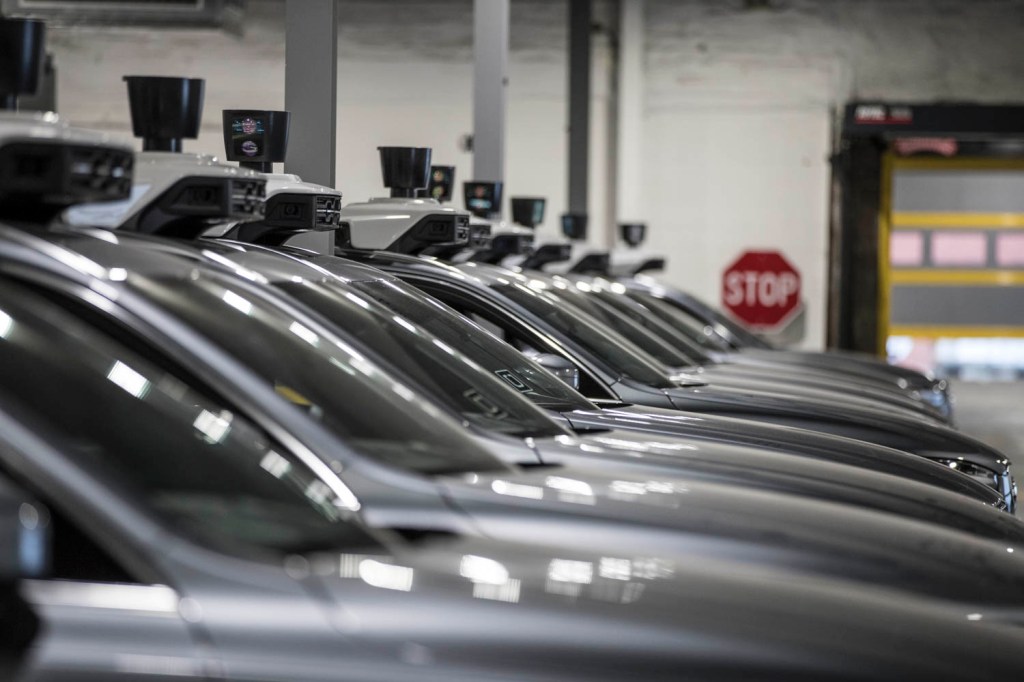Uber spent $457 million last year on research and development of autonomous vehicles, flying cars (known as eVTOLs) and other “technology programs” and will continue to invest heavily in the futuristic tech even though it expects to rely on human drivers for years to come, according to the company’s IPO prospectus filed Thursday.
R&D costs at Uber ATG, the company’s autonomous vehicle unit, its eVTOL unit Uber Elevate and other related technology represented one-third of its total R&D spend. Uber’s total R&D costs in 2018 were more than $1.5 billion.
Uber filed its S-1 on Thursday, laying the groundwork for the transportation company to go public next month. This comes less than one month after competitor Lyft’s debut on the public market. Uber is listing under the New York Stock Exchange under the symbol “UBER,” but has yet to disclose the anticipated initial public offering price.
Uber believes that autonomous vehicles will be an important part of its offerings over the long term, namely that AVs can increase safety, make rides more efficient and lower prices for customers.
However, the transportation company struck a more conservative tone in the prospectus on how and when autonomous vehicles will be deployed, a striking difference from the early days of Uber ATG when former CEO Travis Kalanick called AVs an existential risk to the business.
Uber contends there will be a long period of “hybrid autonomy” and it will continue to rely on human drivers for its core business for the foreseeable future. Uber said even when autonomous vehicle taxis are deployed, it will still need human drivers for situations that “involve substantial traffic, complex routes, or unusual weather conditions.” Human drivers will also be needed during concerts, sporting events and other high-demand events that will “likely exceed the capacity of a highly utilized, fully autonomous vehicle fleet,” the company wrote in the S-1.
Here’s an excerpt from the S-1:
Along the way to a potential future autonomous vehicle world, we believe that there will be a long period of hybrid autonomy, in which autonomous vehicles will be deployed gradually against specific use cases while Drivers continue to serve most consumer demand. As we solve specific autonomous use cases, we will deploy autonomous vehicles against them. Such situations may include trips along a standard, well-mapped route in a predictable environment in good weather.
Uber contends it is well-suited to balance that potentially awkward in-between phase when both human drivers and autonomous vehicles will co-exist on its platform.
“Drivers are therefore a critical and differentiating advantage for us and will continue to be our valued partners for the long-term,” Uber wrote.
Despite Uber’s forecast and more tempered tone, the company is pushing ahead on autonomous vehicles.
Uber ATG was founded in 2015 in Pittsburgh with just 40 researchers from Carnegie Robotics and Carnegie Mellon University. Today, Uber ATG has more than 1,000 employees spread out in offices in Pittsburgh, San Francisco and Toronto.
Uber acknowledged under the risk factors section of the S-1 that it could fail to develop and successfully commercialize autonomous vehicle technologies or could be undercut by competitors, which would threaten its ride-hailing and delivery businesses.
Uber’s view of which companies pose the biggest threat to the company was particularly interesting. The company named nearly a dozen potential competitors, a list that contained a few of the usual suspects like Waymo, GM Cruise and Zoox, as well as less-known startups such as May Mobility and Anthony Levandowski’s new company, Prontio.ai. Other competitors listed in the S-1 include Tesla, Apple, Aptiv, Aurora and Nuro. Argo AI, the subsidiary of Ford, was not listed.
ATG has built more than 250 self-driving vehicles and has three partnerships — Volvo, Toyota and Daimler — that illustrates the company’s mult-tiered strategy to AVs.
Uber has a first-party agreement with Volvo. Under the agreement announced in August 2016, Uber owns Volvo vehicles, has added its AV tech and plans to deploy those cars on its own network.
Its partnership with Daimler is on the other extreme. In that partnership, announced in January 2017, Daimler will introduce a fleet of its own AVs on the Uber network. This is similar to Lyft’s partnership with Aptiv.
Finally, there’s Toyota, a new partnership just announced in August 2018, that is a hybrid of sorts of the other two. Uber says it expects to integrate its autonomous vehicle technologies into purpose-built Toyota vehicles to be deployed on its network.































Comment